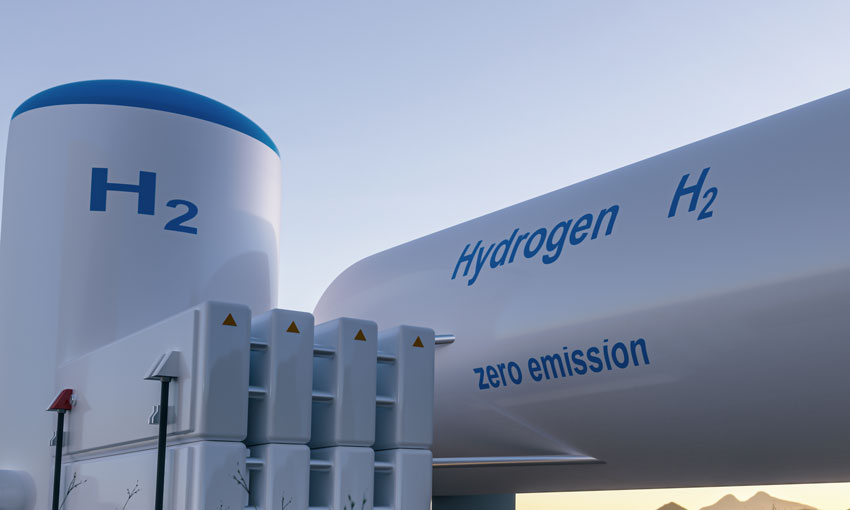ANALYSTS for research firm Wood Mackenzie believe Australia’s low-carbon hydrogen trade could be worth up to US$90bn in 2050.
With a growing project pipeline, measured at 2.94 gigawatts of named green hydrogen electrolyser capacity as of 2020, Australia is now the world’s second largest owner of hydrogen projects after the Netherlands. Just this year alone, Australia’s pipeline of advanced and early-stage project developments has grown a further 45% to 4.25 GW.
Speaking at the recent APPEA conference, Wood Mackenzie head of markets and transitions, Prakash Sharma said, “Australia’s key export markets – Japan, South Korea, China, India and Europe – are large carbon emitters and net importers of natural resources.
“Their import needs have steadily increased in the past two decades and now average at more than 70% of their total energy demand.”
He said as these countries raise climate ambitions, they will need to source clean energy to decarbonise steel, chemicals, cement, heavy-duty mobility, shipping and power generation.
“In a net-zero emissions world, a stable and reliable source of low-carbon hydrogen supply becomes essential because it is impossible to tell how a given molecule of hydrogen has been produced,” Mr Sharma said.
“A guarantee of origin is therefore crucial to allow for minimal environmental impact, that is carbon leakage. Standards also help with risk assessment and transparent market pricing.”
He said Australia stands to benefit as rules of hydrogen shipping, transport, storage and product quality are set and accepted internationally.
“Australia’s share in the globally traded market for low-carbon hydrogen or its derivatives could reach 25-45m tonnes by 2050, equivalent to US$50 to US$90bn in potential export revenue.”
The challenge is determining the best transport method for Australia’s export supply chains. All three forms of seaborne transportation under consideration, liquid hydrogen, liquid organic hydrogen carriers and ammonia have advantages and also challenges. The effective carrier choice depends on the end-use, purity and storage requirements. For example, LH2 is preferred if the end-use requires liquid or high-purity hydrogen such as mobility applications. On the other hand, ammonia gains where it can be used directly as a feedstock avoiding the cost of cracking NH3 back into hydrogen.
Sharma said: “Our proprietary hydrogen costing and energy transition scenario modelling show Australia’s hydrogen delivered costs can fall below US$2/kg longer-term, making it competitive in all end-use cases in key markets of North East Asia.
“We estimate ammonia would be the first hydrogen-carrier in the export market facilitated by Australia from mid-2020s. Low-carbon hydrogen demand in Japan and Korea reaches 30Mt in 2050 with ammonia taking one-third market share on this route.”
Green LNG
Australian producers need to be at the forefront of green LNG to remain competitive, says Wood Mackenzie.
As the energy transition gathers momentum, countries and corporates are racing ahead to announce net-zero pledges and decarbonisation targets. Countries with carbon neutrality pledges now account for 30% of global gas demand and 75% of LNG demand. The list includes some of Australia’s largest LNG customers – China, Japan and South Korea.
In addition, faced with new and lower-cost LNG supply coming online over the next decade from Qatar and Russia, Australian producers must do more to avoid losing market share.
Speaking at the APPEA conference, Wood Mackenzie senior analyst Daniel Toleman said, “As the world’s largest LNG supplier in 2020 and a jurisdiction leading the push to decarbonise, Australia can be a frontrunner in green LNG.
“Australian operators are not only looking to fully offset the emissions of cargoes but also are among the first to materially reduce emissions.”
Carbon-neutral or green LNG has made a big splash in industry headlines since mid-2019. But to date, it accounts for only a small share of the global LNG market, less than 1% of delivered cargoes up until 2021. While there is still no clear template for what a carbon-neutral LNG cargo is in emission accounting terms, emphasis on emissions associated with the entire LNG value chain from production to end-user consumption is growing.
Mr Toleman said, “There is no doubt that more needs to be done. Carbon offsets are just a step along the road to greener LNG and ultimately must be coupled with efforts to materially reduce emissions in the value chain”.
Australia is home to some of the most emission-intensive LNG plants in the world. The average emission intensity of LNG projects globally is 0.56 tCO2e/tLNG (tonnes of carbon dioxide equivalent per tonne of LNG produced) and over half of Australian LNG plants have emissions above this level.
Emissions originate throughout the supply chain. One of the key causes is the high CO2 fields that supply several Australian LNG projects. Another cause is the location of upstream supply sources which are at considerable distance from the LNG plants they supply. As a result, significant compression, which is highly emission-intensive, is required to transport the gas.
Mr Toleman said, “To protect market share Australian operators must reduce their carbon footprint. Initial steps are being taken, but progress is not fast enough.
“We are still far away from both a global carbon price and a carbon creditation system for CCS in Australia. There are also geological and technical hurdles, as evidenced by ongoing issues at the Gorgon LNG CCS project.
“As carbon consciousness increases, LNG marketing must evolve. The delivered cost of LNG will no longer be the only cost factor for buyers and ultimately carbon cost considerations will lead to new differentiations and scrutiny between projects.”

